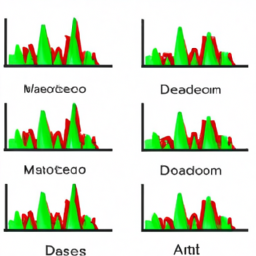
Understanding the MACD Indicator
The Moving Average Convergence Divergence (MACD) is a trend-following momentum indicator that shows the relationship between two moving averages of a security’s price. The MACD is calculated by subtracting the 26-period Exponential Moving Average (EMA) from the 12-period EMA. The result of that calculation is the MACD line. A nine-day EMA of the MACD called the “signal line,” is then plotted on top of the MACD line, which can function as a trigger for buy and sell signals.
How to Interpret MACD Indicator Signals
The MACD is a popular tool among technical traders because it generates signals that are clear and straightforward. When the MACD crosses above the signal line, it gives a bullish signal, indicating that it may be a good time to buy. Conversely, when the MACD crosses below the signal line, it gives a bearish signal, suggesting it may be a good time to sell.
MACD Bullish Signal
When the MACD line crosses above the signal line, a bullish signal is generated. This is considered a bullish turning point. Traders interpret this as a signal to buy the security. The higher the MACD line is above the signal line, the more bullish the market is considered to be.
MACD Bearish Signal
On the other hand, when the MACD line crosses below the signal line, a bearish signal is generated. This is considered a bearish turning point. Traders interpret this as a signal to sell the security. The lower the MACD line is below the signal line, the more bearish the market is considered to be.
Using the MACD Histogram
The MACD histogram is an elegant visual representation of the difference between the MACD and the signal line. The histogram is positive when the MACD line is above the signal line. Conversely, the histogram is negative when the MACD line is below the signal line.
Understanding MACD Histogram Signals
The MACD histogram can provide a deeper understanding of the balance of power between bulls and bears than the MACD line alone. When the histogram increases in height, it indicates that bulls are gaining strength and it might be a good time to buy. Conversely, when the histogram decreases in height, it signals that bears are gaining strength and it might be a good time to sell.
Limitations of the MACD Indicator
Like all indicators, the MACD is not infallible and should be used in conjunction with other technical analysis tools. The MACD can lag behind the actual market because it is a trend-following, not a predictive, indicator. Moreover, in a volatile market, the MACD may give false signals, as the rapid price changes can cause the MACD to give signals that are not representative of the market’s overall direction.
In conclusion, the MACD is a powerful tool in the hands of a knowledgeable trader. By understanding how to interpret its signals, traders can make informed decisions about when to buy or sell securities.